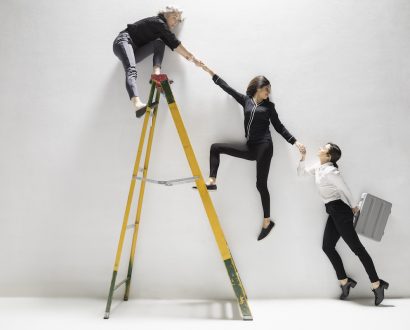Victoria Weekes gives a voice to Australia’s campaign for gender equality

Although International Women’s Day comes and goes, it’s important to remember that the mission to achieve gender equality is a year-round effort.
More than 100 years after women in Australia won the right to vote, they are still battling for equal rights and representation.
In response to the unacceptably slow pace of change towards gender equality in Australia, a new body was formed in September 2018 to correct the imbalance.
The Australian Gender Equality Council (AGEC) today has a member network of more than 500,000 girls and women all aiming to drive a cultural shift in the country’s approach to gender equality.
The CEO Magazine sat down with AGEC Chair Victoria Weekes to discuss the significance of International Women’s Day and how the not-for-profit hopes to make an impact in Australia.
Q. What is the purpose of the AGEC?
A. The AGEC was formed not because the existing gender equality bodies weren’t achieving change, but because a group of individuals realised that Australia needed a single national voice to amplify the impact and create a sense of community around the issue.
At the end of the day, we have to remember that the fight for gender equality is a marathon. However, we also have to treat it like a sprint because Australia is way behind.
Q. Why is it so important to recognise International Women’s Day?
A. It’s important to celebrate International Women’s Day, but we must remember that it’s an all-year-round subject. The day is a public and symbolic call to action for men and women around the world to continue the fight for gender equality.
It’s also a fantastic marker of success to see what we’ve achieved, what we still have to do, and what we need to do more of during the other 364 days of the year.
Q. Can you explain the results you discovered in the ‘Hands up for Gender Equality’ report?
A. We created this report in conjunction with The University of Queensland Business School after a survey of 10,000 high school girls and boys in grades seven to 12. It looked at both their general self-efficacy as well as social self-efficacy.
There’s been much debate as to whether women are less confident than men, particularly in the workplace, and whether this is innate or socially constructed. We wanted to see how self-confidence was formed early on and we found some very powerful differences between boys and girls. By the time they were in Grade 7, girls were already leaning towards careers in caring and social sciences, while boys leaned towards STEM.
We now know that if we’re going to change perceptions and get more women in careers like engineering, science and mining, we have to stop traditional gender stereotypes that are forming as early as kindergarten. We have to teach young girls that they can be a firewoman, a plumber, a policeman, a builder or a pilot. They’re not confined to one industry.
"These engrained, resistant gender stereotypes are the greatest thing standing in the way of gender equality in Australia. We need to change the way we think."
Q. What is AGEC looking to achieve in the short and long term?
A. Over the next one to three years we’d like to see a shift towards some very hard commitments and quotas regarding the representation of women in leadership positions across the board – from business to academia and politics.
I think the argument that putting a woman into a job based on quotas is contrary to merit is absolutely rubbish. No employer is going to put a blindfold on and point to a woman and put her in the role – it’s nonsense.
The point of targets and quotas is to recognise that there are talented women out there, even if they’re not right in front of you. We have to figure out how to find them, and how to measure their talent, because sometimes the traditional measure is not the right one.
We’re in the lead up to the election now and it’s great to see that both parties are making gender equality an issue. The fact that we now have so many women in cabinet demonstrates two things: first, it’s that the talent is there; and second, is that when there’s a crisis, you often see women put into the roles. If you look back at WWI and WWII when the world was in crisis, women were put into very non-traditional roles and as soon as the wars were over, out they went.
The bottom line: no employer is going to put a person – male or female – into a job they don’t think they’re capable of doing.
AGEC has discovered that the following inequalities are still present in Australia:
- Women still receive on average 23% less remuneration than men
- 1 in 2 women are discriminated against at work for being mothers
- Girls receive 27% less pocket money than boys
- 1 in 5 women experience sexual violence after the age of 15
- Women are retiring on 42% less superannuation than men.
If you or your business would like to donate to the AGEC’s ‘It’s Time’ campaign, or to AGEC itself to assist with research and advocacy, click here.
We bring you even more inspiring stories from incredible women around the world who have made their mark but continue to fight for the rights of their less fortunate sisters.